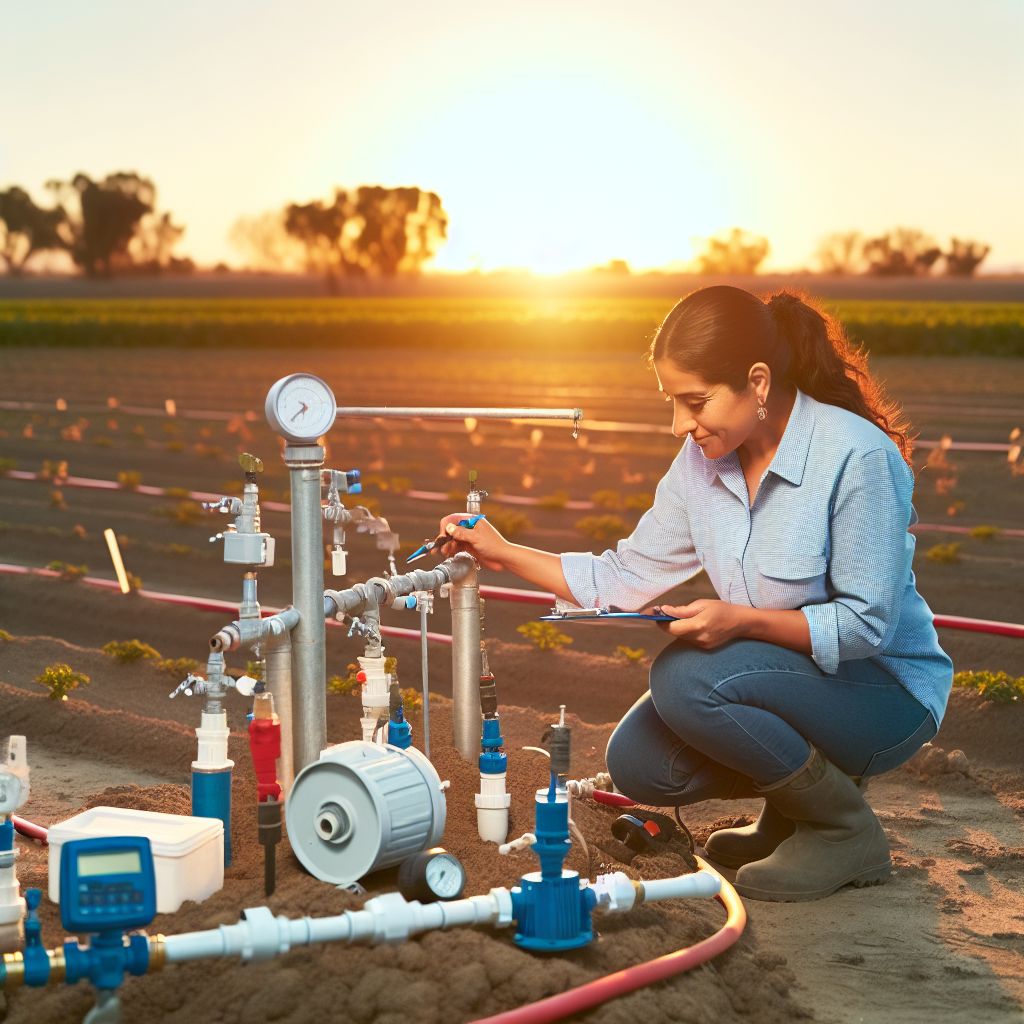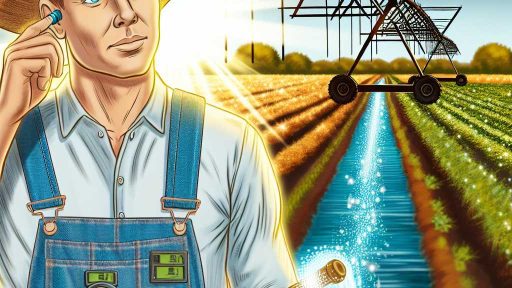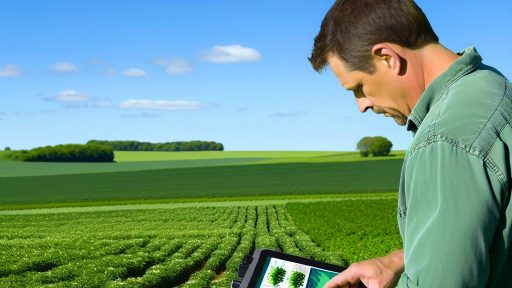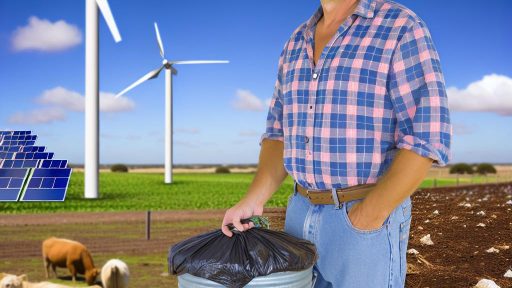Introduction to Renewable Resources in Agriculture
Defining Renewable Resources
Renewable resources are naturally replenished over time.
They include sunlight, wind, water, and biomass.
Using these resources can significantly benefit agricultural practices.
The Importance of Irrigation
Irrigation is crucial for crop production.
It provides necessary water during dry periods.
Effective irrigation methods enhance crop yields.
Consequently, they contribute to food security.
Integrating Renewable Resources into Irrigation
Farmers can harness solar energy for irrigation systems.
Solar-powered pumps reduce reliance on fossil fuels.
Wind energy can also power irrigation equipment.
This integration promotes sustainable farming practices.
Benefits of Enhanced Irrigation Efficiency
Utilizing renewable resources boosts irrigation efficiency.
It reduces costs associated with conventional water sources.
Moreover, it minimizes the environmental impact of farming.
Efficient irrigation practices conserve water resources.
Transform Your Agribusiness
Unlock your farm's potential with expert advice tailored to your needs. Get actionable steps that drive real results.
Get StartedExamples of Successful Implementations
Many farms have adopted renewable energy systems successfully.
For instance, organic farms in California use solar irrigation pumps.
This method helps them decrease operational costs.
Additionally, farms in Texas employ wind energy for watering crops.
Challenges Facing Adoption
Despite the benefits, challenges remain in adopting renewable resources.
Initial installation costs can be high for farmers.
Furthermore, technical knowledge is essential for effective implementation.
Support from agricultural organizations can ease this transition.
Future Prospects for Renewable Irrigation
The future looks promising for renewable resource utilization.
Advancements in technology will enhance efficiency further.
Furthermore, continued research will address existing challenges.
Renewable resources hold the key to sustainable agriculture.
Importance of Irrigation Efficiency in Farming
Enhancing Agricultural Productivity
Irrigation efficiency directly boosts agricultural productivity.
Effective irrigation provides crops with the right amount of water.
This helps to optimize growth and yield.
Consequently, farmers can cultivate more crops on the same land.
Conserving Water Resources
Efficient irrigation methods help conserve vital water resources.
Farmers can utilize less water while achieving better results.
This conservation is essential in regions facing water scarcity.
Moreover, it promotes sustainable farming practices.
Reducing Environmental Impact
Improving irrigation efficiency lowers the environmental footprint of agriculture.
Decreased water usage reduces the risk of soil salinization.
This practice also minimizes runoff and pollution.
As a result, ecosystems surrounding farms remain healthier.
Showcase Your Farming Business
Publish your professional farming services profile on our blog for a one-time fee of $200 and reach a dedicated audience of farmers and agribusiness owners.
Publish Your ProfileEconomic Benefits for Farmers
Higher irrigation efficiency translates into economic savings.
Farmers spend less on water resources and pumping costs.
Furthermore, increased crop yields boost profitability.
Efficient irrigation thus supports farm sustainability and growth.
Adapting to Climate Change
Climate change poses significant challenges to agriculture.
Efficient irrigation systems help farmers adapt to these changes.
They can maintain productivity despite shifting weather patterns.
This adaptability enhances food security for communities.
Overview of Current Irrigation Practices and Their Environmental Impact
Introduction to Irrigation Practices
Irrigation plays a vital role in agricultural productivity.
Farmers depend on various methods to ensure adequate water supply.
Common techniques include surface, drip, and sprinkler irrigation.
Each method has distinct advantages and disadvantages.
Surface Irrigation Methods
Surface irrigation involves water flowing over the soil surface.
This technique is straightforward and cost-effective.
However, it often leads to water wastage through runoff.
It can also contribute to soil erosion if not managed properly.
Drip Irrigation Efficiency
Drip irrigation delivers water directly to plant roots.
This method improves water use efficiency significantly.
As a result, it reduces water loss through evaporation and runoff.
Farmers can optimize water use and minimize resource wastage.
Sprinkler Irrigation Flexibility
Sprinkler irrigation simulates natural rainfall.
This system offers versatility across different soil types.
Nonetheless, it can increase evaporation losses in hot climates.
Furthermore, it may require substantial energy to operate.
Environmental Impacts of Traditional Practices
Conventional irrigation practices can harm local ecosystems.
Over-extraction of water from rivers and groundwater depletes resources.
It often results in habitat loss for flora and fauna.
Additionally, chemical runoff contaminates nearby water bodies.
Challenges Facing Modern Irrigation
Climate change exacerbates water scarcity and demand stress.
Farmers face rising costs for water and energy supplies.
This makes adopting efficient irrigation systems crucial.
Timing and volume of water application directly impact harvest quality.
The Need for Sustainable Solutions
Sustainable irrigation practices address current challenges effectively.
They reduce water wastage while maintaining crop yields.
Farmers can adopt technologies that minimize environmental impacts.
Integrating renewable resources can enhance overall efficiency.
See Related Content: How Wind Turbines Can Improve Farm Energy Efficiency
Types of Renewable Resources for Irrigation
Solar Energy
Solar energy harnesses sunlight to power irrigation systems.
It significantly reduces energy costs for farmers.
By using solar panels, farms can generate their own electricity.
Showcase Your Farming Business
Publish your professional farming services profile on our blog for a one-time fee of $200 and reach a dedicated audience of farmers and agribusiness owners.
Publish Your ProfileThis resource is abundant and widely available across many regions.
Farmers often integrate solar pumps for efficient water delivery.
Additionally, these systems require minimal maintenance.
This technology supports sustainable farming practices.
Hence, it contributes to lower carbon footprints.
Wind Energy
Wind energy utilizes the kinetic energy of wind to produce power.
It is particularly useful in areas with consistent wind patterns.
Wind turbines can complement solar systems for a consistent energy supply.
This energy source allows farmers to reduce their reliance on fossil fuels.
Moreover, wind-powered irrigation systems can operate autonomously.
Evaluating local wind conditions can help determine feasibility.
Farmers can benefit from government incentives for renewable installations.
Biomass Energy
Biomass energy converts organic materials into usable energy.
This approach offers a sustainable method for waste management.
Farmers can use crop residues and animal waste for biomass production.
In turn, these materials provide an excellent source of energy.
Moreover, biomass systems can power irrigation pumps directly.
This method contributes to reducing greenhouse gas emissions.
Utilizing waste for energy fosters a circular economy in agriculture.
Farmers can improve their profitability while caring for the environment.
Delve into the Subject: Balancing Soil Nutrients for Sustainable and Profitable Farming
Technologies for Harnessing Renewable Energy in Irrigation Systems
Solar Energy Solutions
Solar energy represents a key resource for efficient irrigation.
Solar panels convert sunlight into electricity, powering irrigation systems.
Farmers can install solar pumps to save on energy costs.
These pumps efficiently deliver water directly to crops.
Moreover, solar solutions reduce reliance on fossil fuels.
Wind Energy Applications
Wind energy offers another innovative solution for irrigation systems.
Turbines harness wind to generate electricity for pumps.
This technology is particularly useful in windy areas.
Wind-powered systems operate continuously and reliably.
Farmers benefit from lower operational costs over time.
Hydropower in Irrigation
Hydropower can be effectively integrated into irrigation systems.
Small-scale hydropower installations utilize water flow to generate energy.
This energy powers pumps, enhancing irrigation efficiency.
Hydropower reduces dependence on nonrenewable energy sources.
Biodiesel and Biofuels
Biodiesel and biofuels provide a sustainable alternative for irrigation energy needs.
Farmers can produce biofuels from crops or waste materials.
Using these fuels reduces greenhouse gas emissions significantly.
Additionally, it promotes local economies by utilizing regional resources.
Smart Irrigation Technology
Smart irrigation technology enhances water usage efficiency.
Showcase Your Farming Business
Publish your professional farming services profile on our blog for a one-time fee of $200 and reach a dedicated audience of farmers and agribusiness owners.
Publish Your ProfileThese systems use sensors to monitor soil moisture levels.
Automated systems adjust water delivery based on real-time data.
This approach minimizes waste and optimizes resource use.
Farmers can achieve substantial water savings with smart technology.
Integration of Renewable Technologies
Combining various renewable technologies maximizes irrigation efficiency.
For instance, integrating solar and wind systems can provide stable energy sources.
This hybrid approach ensures reliable power for irrigation needs.
Furthermore, comprehensive systems optimize overall resource management.
Farmers adopting integrated solutions can reduce costs and enhance sustainability.
Gain More Insights: Implementing Wind-Driven Turbines For Sustainable Livestock Feed Production

Case Studies: Successful Implementation of Renewable Resource Utilization in Irrigation
Solar-Powered Irrigation in California
In California, farmers adopted solar-powered irrigation systems.
This approach reduced energy costs significantly.
One example is Green Valley Farms.
They installed solar panels to power their irrigation systems.
Consequently, they reported water savings of up to 30%.
Moreover, energy expenses dropped by nearly half.
This project showcased the effectiveness of renewable resources in agriculture.
Wind Energy for Irrigation in Texas
In Texas, wind farms support irrigation needs.
The Windy Acres Ranch utilizes wind turbines for irrigation.
These turbines generate electricity for pumps.
This system powers around 500 acres of farmland.
As a result, irrigation costs decreased while efficiency improved.
This case demonstrates the versatility of wind energy in farming.
Rainwater Harvesting Strategies in Australia
Australia faces water scarcity challenges.
Farmers there implement rainwater harvesting techniques effectively.
Sunny Hill Organic Farm is a leading example.
They capture rainwater from roofs and store it in tanks.
This harvested water sustains crops during dry spells.
Ultimately, they maintain productivity and reduce water dependency.
Geothermal Heating for Greenhouses in Iceland
Iceland utilizes geothermal energy for agriculture.
One notable example is the Fridheimar greenhouse.
They use geothermal heating for tomato production.
This method allows year-round cultivation despite harsh climates.
Moreover, it minimizes energy consumption and carbon footprint.
Consequently, they produce high-quality tomatoes with renewable energy.
Biogas in Sustainable Farming
Farmers are increasingly using biogas for irrigation.
Green Pastures Farms generates biogas from livestock waste.
This renewable source powers their irrigation systems.
As a result, they achieve significant cost savings and reduce waste.
The biogas system also contributes to environmental sustainability.
Showcase Your Farming Business
Publish your professional farming services profile on our blog for a one-time fee of $200 and reach a dedicated audience of farmers and agribusiness owners.
Publish Your ProfileThis innovative approach highlights the intersection of waste management and irrigation.
Gain More Insights: Understanding Animal Welfare Certifications For Humane Livestock Farming
Challenges and Barriers to Adoption of Renewable Irrigation Methods
Technological Limitations
Current technology may not adequately support all types of renewable irrigation methods.
For example, solar-powered pumps can be costly for small farmers.
Additionally, some systems require complex setups that are difficult to maintain.
Moreover, farmers might lack access to necessary technological training.
Financial Constraints
High initial investment costs deter many farmers from adopting renewable irrigation systems.
Many small-scale farmers struggle to secure funding for such technologies.
Furthermore, financial incentives for adopting renewable methods are often limited.
This financial burden makes traditional irrigation methods more appealing.
Regulatory Hurdles
Regulatory barriers can complicate the adoption of renewable irrigation techniques.
For instance, bureaucratic processes may deter farmers from applying for permits.
Additionally, outdated regulations may not support innovative technologies.
As a result, farmers may face unexpected delays in implementation.
Lack of Awareness and Education
Many farmers remain unaware of the benefits of renewable irrigation methods.
This lack of awareness hinders wider adoption across agricultural communities.
Furthermore, inadequate education on these techniques limits farmers’ confidence.
Workshops and training programs can help bridge this knowledge gap.
Market Forces and Competition
Market demand for renewable methods is still developing in many regions.
Consequently, farmers may hesitate to invest in technologies without proven demand.
Additionally, competition from traditional irrigation systems can also limit expansion.
Farmers need assurance of market viability to make significant changes.
Future Trends in Renewable Resource Utilization for Sustainable Agriculture
Adoption of Solar Energy
Farmers are increasingly using solar panels for irrigation systems.
This trend reduces reliance on fossil fuels.
Furthermore, solar energy offsets operational costs.
In addition, it helps manage water resources efficiently.
Integration of Smart Technology
Smart irrigation systems are becoming more popular.
These systems utilize sensors for real-time data collection.
By doing so, they optimize water usage effectively.
Moreover, they minimize waste through accurate measurements.
Emphasis on Water Conservation
Water conservation techniques are gaining traction worldwide.
Farmers are implementing rainwater harvesting methods.
This technique collects and stores rainwater for irrigation.
Additionally, drip irrigation systems are being widely adopted.
These systems deliver water directly to plant roots.
Organic Waste Utilization
Organic waste is increasingly being recycled as a resource.
Farmers are using compost to enrich soil health.
This practice enhances nutrient availability for crops.
Moreover, it reduces the need for chemical fertilizers.
Educational Initiatives and Training
Training programs are essential for farmers transitioning to sustainable practices.
Showcase Your Farming Business
Publish your professional farming services profile on our blog for a one-time fee of $200 and reach a dedicated audience of farmers and agribusiness owners.
Publish Your ProfileWorkshops teach techniques for renewable resource utilization.
Furthermore, local governments are supporting these educational initiatives.
By investing in knowledge, farmers can increase productivity sustainably.
Additional Resources
AWS Cloud – Amazon Sustainability
Water scarcity in agriculture: An overview of causes, impacts and …




